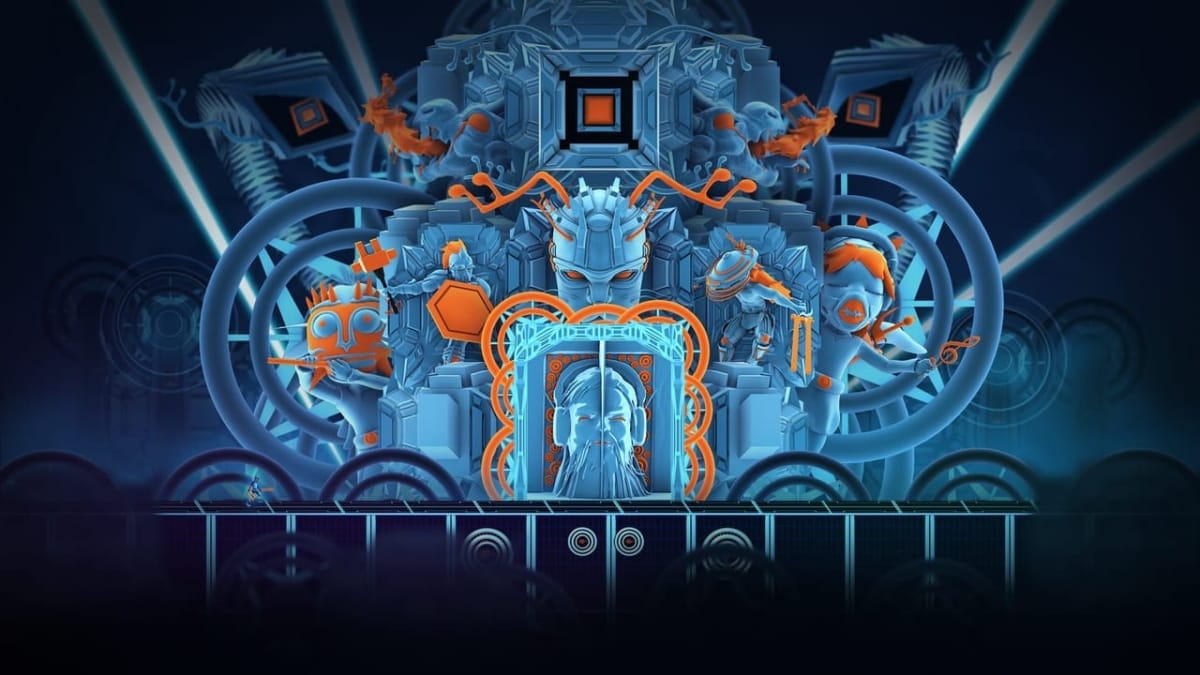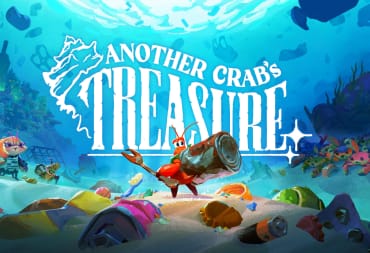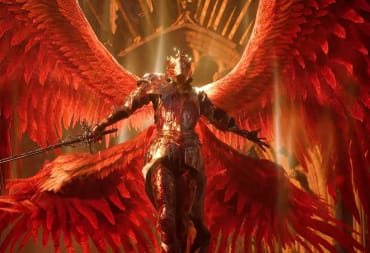The rhythm genre is one steeped in tradition; of fundamentally similar mechanics and ideas applied to different settings and situations. Klang, the action/adventure/rhythm hybrid developed by Tinimations sets out to break free of this routine and tread some new ground in the familiar genre. By applying standard rhythm-based gameplay to a vast range of different accompanying mechanics, ranging from platforming to puzzle-solving, Klang emphasizes the design principle of dynamic progression.
The story kicks off with an unnamed warrior rebelling against the rule of Soundlord Sonus. He journeys through a range of connected levels, engaging in battle with Sonus’ cronies along the way, in an effort to overthrow the ruler. The story is delivered in brief cut scenes between levels, devoid of voice acting, and any kind of direct narrative delivery. It’s very much designed as a loose connection to drive the player through levels, and it offers very little motivation outside of some intermittent eye candy. The cutscenes are all incredibly vivid and well-animated, with stellar presentation throughout, but the story itself is minimal, and ultimately of very little consequence.

From start to finish, the main story component lasts around ninety minutes for a standard playthrough. Each level is quick and snappy, with rapid progression which ensures a constant sense of momentum. Upon initial completion, a ‘bonus area’ opens up, allowing access to a selection of increasingly difficult levels to test the players’ mettle. Further stages in this area can be unlocked by finding hidden items in the main stages, encouraging exploration and replayability. The stages are rather small, so it’s never too difficult to track down hidden items or revisit a stage to improve your score. All in all, the entire experience weighs in at around two and a half hours, so it’s a short, sharp journey that emphasizes replayability and high-score chasing.
The stages themselves all emphasize different mechanics, with similar themes grouped together. The core mechanics of 2D movement and rhythm-matching remain constant throughout, but the surrounding elements range from stealthy platforming to simple puzzle-solving. The controls are relatively simple, with WASD for movement and the arrow keys used to respond to rhythmic events. Klang makes a point of throwing as many different elements at you as possible, so you could be navigating a precarious string of jumps while deflecting projectiles to the rhythm, and avoiding instant-death spotlights all at the same time. Needless to say, the difficulty level is high, though never really inaccessible. It’s very much a matter of trial-and-error, and pattern recognition is essential to survive the later challenges.
However, there are a handful of challenges interspersed throughout the game where movement is restricted, and the core focus is on simple rhythm matching. These moments allow the tight controls and fluid rhythm-based gameplay to stand on their own. The variation in the gameplay otherwise is a major strong point, but being able to just enjoy those more straightforward moments is incredibly cathartic. A few particular stages are incredibly punishing, and the sheer audiovisual chaos on hand can be difficult to deal with, but the controls always feel tight and death generally feels like the fault of the player outside of a few exceptions.
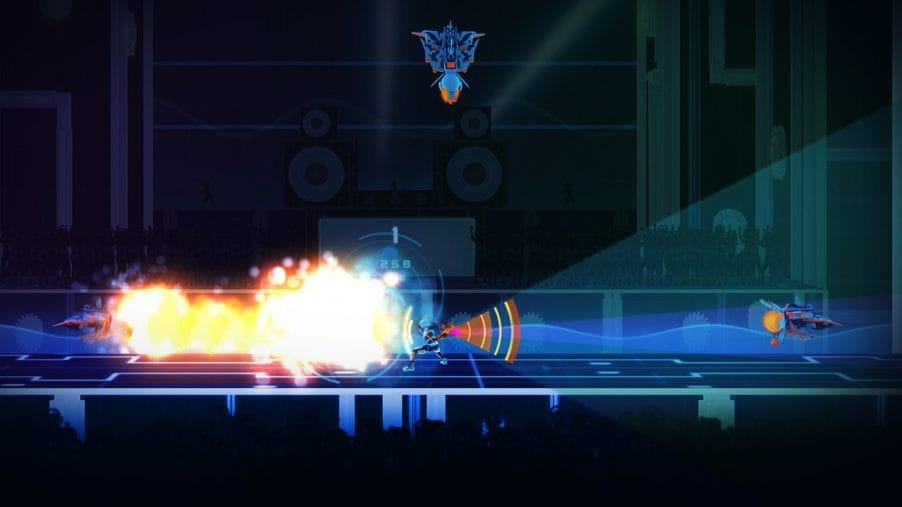
One major grievance is the general obfuscation of conveyance. Simply put, with so many elements on screen at any given time and the dynamic objectives at hand, it’s sometimes difficult to know exactly how to proceed. This feeds into the trial and error gameplay, essentially necessitating a few deaths in order to get a handle on the situation at hand. It’s a source of frustration, but with repetition, all trials can be overcome. If the visual layout and level design were clearer, it would serve to lessen the immediate barrier of entry, and simplify the whole experience, but Klang as a whole feeds off that chaos. It’s a little bit messy, but it makes for a more rewarding experience by the journey’s end.
Klang utilizes a stellar soundtrack composed by bLiNd to complement the action. There’s a wide range of EDM tunes to play along with, and they’re all integrated into their respective levels quite well. The high energy nature of the soundtrack is an excellent accompaniment to the dynamic gameplay. It kicks off with a bang, and never lets up, providing an intense ride from start to finish. The obstacles in each level are synced with the pulsing beat of the soundtrack, which helps encourage precision platforming and provides quite the spectacle when everything comes together perfectly.
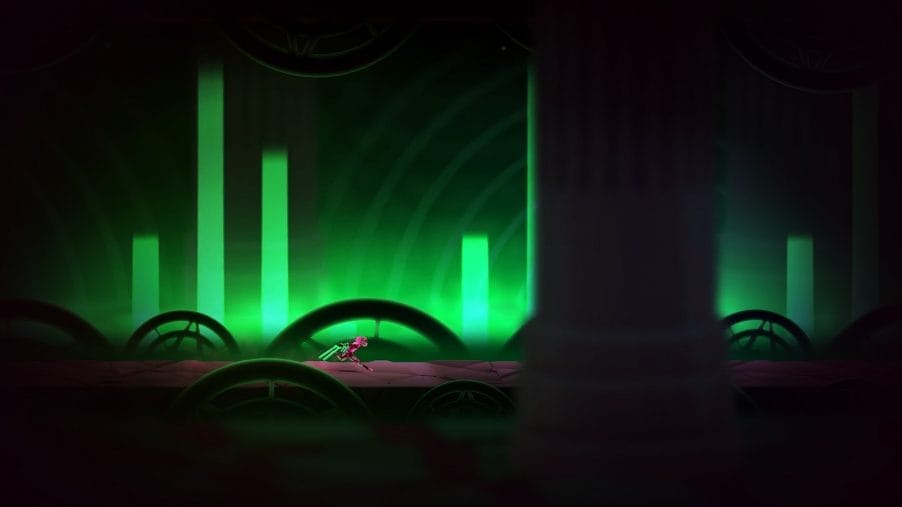
Visually, Klang reflects its EDM soundtrack and frenetic action with a neon-inspired aesthetic. Bright orange and blues form the base of the visual design, with stark lighting used to bring a great deal of contrast and make the characters and prominent elements stand out. Building up a combo causes the color palette to change, adding to the visual chaos, but also providing a blatant indicator of your success. It’s a perfectly fitting aesthetic for the general theme of the game, and it’s immediately eye-catching and appealing if a bit disorienting in motion. The character designs are generally well-crafted but feel generic at the same time, and that same sentiment also extends to the general design of the world and levels.
Though it sets out to create a unique experience within the rhythm genre, Klang finds itself struggling with a few minor shortcomings. The focus on varied, dynamic gameplay is generally exciting and entertaining, though the lack of conveyance and sheer chaos on display makes it a difficult game to follow at times. Without a clear focus, it’s difficult to engage, and what could’ve been an involved story ends up feeling more like a loosely connected string of events. However, that goal of bringing a touch of innovation to a somewhat static genre was accomplished, and Klang stands as a unique, enjoyable game on its own right, thanks to its tight controls, stellar presentation, and varied, challenging gameplay.
Klang was reviewed on PC via Steam with a code provided by the publisher.
Review Summary
Klang's strengths are also its shortcomings. The dynamic, varied gameplay is immediately exciting and unique, but it also serves to obfuscate the experience. It's an enjoyable journey, but ultimately, Klang could benefit from a bit more focus.
(Review Policy)Pros
- Polished, Appealing Presentation
- Dynamic Gameplay
- Fluid, Responsive Controls
Cons
- Lack of Direction and Focus
- Unclear Mechanics and Conveyance
- Patchy Difficulty
Have a tip, or want to point out something we missed? Leave a Comment or e-mail us at tips@techraptor.net
